The bright yellow streamer — an oversized Slumpbuster sporting a stinger hook and an attitude fit for its quarry — pulsed perfectly through the tannin-stained water, just visible under the surface.
It was a nice tie, I remember thinking to myself as I stood in the bow of the 16-foot Lund skiff, stripping the fly away from a rocky outcrop after casting it tight to the bank. With each long strip, the fly would rise in the water column until it almost breached the surface. Then, I’d drop the line and let it flutter into the depths. It was a rhythmic endeavor, one we’d be devoted the better part of a week to as summer dramatically changed to fall on the banks of a remote lake in the north woods of Saskatchewan.
My uncle sat in the stern of the boat, his hand on the idling little outboard. Like me, he watched the fly swim up and slowly sink.
“He’s gotta eat that,” he said quietly. I agreed. That fly looked so good in the dark water under pasty, gray skies brimming with rain that I muttered something I first heard a guide whisper on the Henry’s Fork after a fruitless retrieve of a big ‘Bugger cast to the bank and stripped back to the boat: “Hell, I’d eat that.”
And then “he” did.
More Like This
The inclination to assign masculine pronouns to big, toothy northern pike aside — which is generally the incorrect option, I might add — the grab was just like dozens before it over the course of the week in the rearview mirror. That is to say that even when you think you expect it, you don’t really expect it.
How something more than 40 inches long just shows up out of nowhere and simply mauls a six-inch streamer will forever be a mystery to me. Sure, I knew it could happen. Judging by the week we’d just spent putting around this tiny lake in the mining country of the boreal north, I was fairly certain it would happen.
But even when the lightning strikes during a raging thunderstorm, there’s that split second of terror. And I think that comes from the sheer violence of the encounter — pike don’t sip flies like Hebgen Lake rainbows. They don’t nudge them, either, like I’ve seen trout do on spring creeks. Pike don’t screw around. They punish flies, just as they would punish anything else that might find its way into that toothy maw lined with row upon row of perfectly sinister teeth.
Their streamlined form — long and sleek and perfectly camouflaged in an olive-green aquatic world — allows them to stop and start on a dime and attack with little to no warning. They’re famous for following flies and lures back to the boat — often, what makes a pike attack isn’t the random strip of something that might resemble food, but instead the quick pull of a fly about to be liberated from the lake and cast again farther out.
Like any predator worth its salt, the pike hates to see a meal get away.
And while some will turn up their noses at big northerns and say something derisive, like “And that’s the best part of fly fishing for pike,” I tend to be one of those anglers who truly appreciates what these big carnivores bring to the whole of the angling table. Most certainly the take of a pike is the climax of the encounter — unless it’s a real giant, and then it’s likely the moment you turn something that pushes 40 pounds loose and watch swim off into the tea-colored ether, maybe a little wounded, but with its surly attitude completely intact.
For the likes of me and a host of fly anglers who have come to love chasing big pike, it’s the teeth. You’ll never lip one. You’ll lose a thumb. And anything that requires the use of a medieval implement simply called a “jaw spreader” to remove a streamer that’s somehow managed to find its way into the throat of giant fish demands your damned respect.
I look at pike a lot like I look at fly fishing for big barracudas or even sharks. The teeth thrill me. The idea that, thanks to a hook wrapped nicely with fur and feathers and maybe a touch of tinsel, I can momentarily best these fish on the food chain energizes me.
If they only knew …
And don’t try and tell me pike don’t fight. That’s a load of crap. They do. They just don’t make a big production of it — they’re bulldogs, not tailwalkers, and the big ones are just obstinate head shakers that refuse to be horsed to the boat. They tug and they run, but mostly, they just stay put and they test the mettle of any 7- or 8-weight rod that has the misfortune of having to help an angler bring a fish of that size and disagreeability to the net.
Another pike complaint: “I hate fishing with wire leader.” Such is life in the birch and spruce forests of the north. You can get away with 40-pound mono, but it will, in time, fall prey to the teeth. There are alternatives to the straight, six-inch stretch of fishing wire — some manufacturers that make fly line, leader and tippet also make a wire-tipped leader that is more flexible and plenty durable, but even then, it, too, will eventually fail. It is a better alternative for fishing poppers and gurglers than traditional wire (and yes, pike hit poppers and gurglers almost as much as they hit streamers — in fact, I’ve gone days on pike lakes armed with nothing but fat, foam monstrosities that look like third-grade art projects), and they do cast a bit better.
If I had my choice, I’d fish a length of 40-pound mono for bit tippet, and I’d check the line for nicks and cuts after every single fish. But that can get a little old … and you only have to forget once to lose a 40-pound fish.
When that big yellow streamer disappeared into the gaping, pale white orifice that was this trophy pike’s mouth, my uncle and I both started and then laughed a bit. The big hunter took the fly just below the surface, so there was an appreciative splash and then a noticeable depression in the otherwise calm surface of this remote pothole situated miles away from anything resembling civilization.
“I knew he’d eat that,” my uncle said.
“Right?” I asked, lifting the 8-weight and tugging tight on a fish that just seemed to want to find the lake’s bottom and then stay there. After a bit of lifting and cajoling and uttering things like, “this thing might be 50 inches long,” we lifted the big female — for nearly every pike over 40 inches in length is, indeed, a “she” — into the stretch net and set about the puzzle of trying to remove the fly without removing a digit, too. She taped out at 46 inches, a beast among beasts.
We finessed the fly out of her mouth with a pair of heavy pliers and, as we lowered the net into the water and watched her carefully as she rested and got ready to swim off, we both knew we’d be back again. Maybe not to this lake, or in this boat or to this lonely stretch of Saskatchewan, but with fish this big waiting ... well, a week’s just not enough.




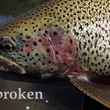






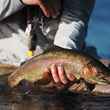




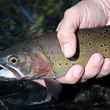








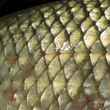

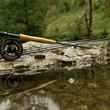

Comments